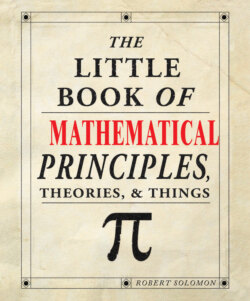Читать книгу The Little Book of Mathematical Principles, Theories & Things - Robert Solomon - Страница 24
На сайте Литреса книга снята с продажи.
4th century BC Greece Conic Sections Menaechmus (380–320 BC)
ОглавлениеThese are a set of curves that are exposed when a cone is cut.
_______________
Conics occur in many places in nature as well as in mathematics.
Imagine a double cone (similar to the one in the diagram below). This cone is cut by a plane. The exposed surface is a conic section.
Double cone.
The type of conic depends on the angle of the plane. The numbers in the diagram indicate the following:
1. The plane is horizontal: a circle.
2. The plane is slightly tilted: an ellipse.
3. The plane is parallel to the side of the cone: a parabola.
4. The plane is steeply tilted: a hyperbola. Notice there are two parts to this curve, both labeled number 4.
There are many ways of defining conics without involving a three-dimensional cone. Take a fixed point F and a fixed line d as in the diagram shown on the following page. Suppose a variable point X moves so that the ratio XF:Xd is constant. Then X moves in a conic.
Focus and Directrix.
The ratio is called the eccentricity, the value of which tells us the sort of conic that is defined. The fixed point F is called the focus. The Earth moves round the Sun in an ellipse with the Sun at the focus. The eccentricity is about 1/90.
There are many other real-life examples of conics. A wheel seen at an angle is an ellipse. Cut a cucumber, and the exposed surface forms an ellipse. Throw an object in the air and you will see that its path is a parabola. The reflecting surface of a car headlight is formed from a parabola.
The Long Range Navigation (LORAN) system used to guide ships involves intersecting hyperbolas.
